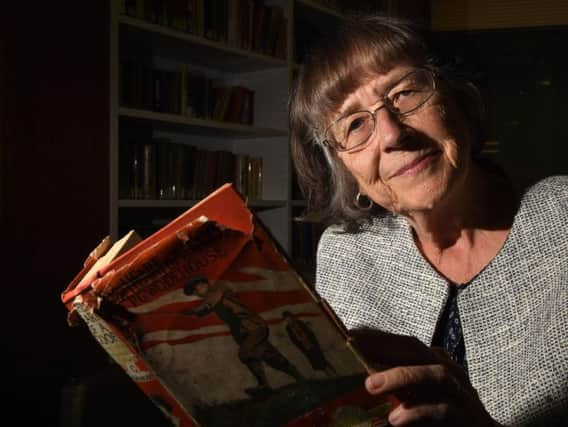Sheffield book project lifts lid on reading habits of city's past


The former Sheffield Hallam English lecturer set up Reading Sheffield six years ago, as a way of documenting the books that city folk read in the 1930s and 40s.
The project has since interviewed 70 people, with their recollections appearing online as audio files and transcripts – and some will even be turned into poetry next year.
Advertisement
Hide AdAdvertisement
Hide AdMary was inspired to begin her research after starting to write a book about what people read in the 1930s and 40s and what kind of pleasure they got out of it.
But after discovering not much research on the subject of popular reading in that era had been done, she decided to take on the Reading Sheffield project.
She said: “In those days there were no Amazon algorithms and that led to lots of serendipity. Our interviewees read everything from comic annuals to PG Wodehouse.
“But that also meant there was also a lot of intellectual sneering – on both the left and the right – and people were afraid that they would be seen as stupid.
Advertisement
Hide AdAdvertisement
Hide Ad“As an English teacher I know people get the reading habit by really going for it and not looking over their shoulder and worrying about what people are thinking about them.
“If you are handicapped by this fear that you are not reading ‘the right’ things you are not going to read in the right way. If I look at what I read when I was 14 a lot of it is rubbish but I got the reading bug.”
Some of the most popular titles of the era,such as the Wizard Book for Boys and the Girls’ Crystal Annual, give amazing insights into what the publishers thought their readers wanted.
“Most people couldn’t afford the comics so they would get the annual at Christmas – they were 7/6d which was a day’s wages for a working man,” said Mary.
Advertisement
Hide AdAdvertisement
Hide Ad“The boys’ book had lots of fun things in it about how to play tricks on your friends while the girls’ book included things like ‘go gay with scarves’ and making pom-poms for your slippers!
“They all seemed to be set in boarding schools as well, so you had all these Sheffield boys and girls reading language that certainly wasn’t normal for Sheffield.”
A perennial favourite for girls at that time was Anne of Green Gables, largely because of its aspirational message.
“A lot of people who we interviewed couldn’t go to grammar school so a book about a girl getting an education really spoke to them,” said Mary.
Advertisement
Hide AdAdvertisement
Hide AdAnd while many of the interviewees were keen to share their history with her, others pulled out after becoming scared of revealing details about their early lives through their reading habits.
“So much of your own history is tied up with your reading history, so people can be a bit wary of sharing that with people,” she said.
The 600 books Mary collected as part of her research have since been donated to Sheffield Hallam University to create an archive of popular fiction.
A collection of 40 poems partly based on the interviews, entitled White Ink Stains and written by Sheffield-based poet Eleanor Brown, will be published by Bloodaxe books next year.
Advertisement
Hide AdAdvertisement
Hide AdMary’s forthcoming book on the subject – entitled Running Down Eyre Street – will be published ‘in the next few years’.
It takes its name from one interviewee who described rushing to Sheffield central library during her mum’s nap so she wouldn’t know she had gone.
Groups and individuals interested in sharing their early reading habits with Mary or booking her for a talk can make contact via the website.
To read and listen to the interviews, visit www.readingsheffield.co.uk.